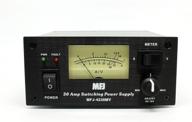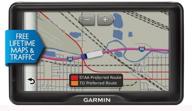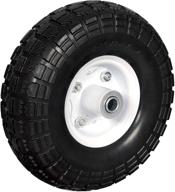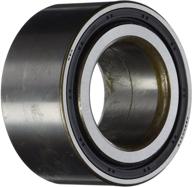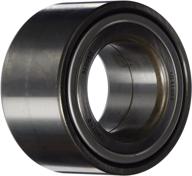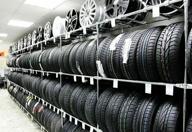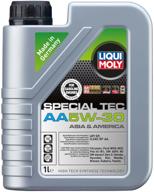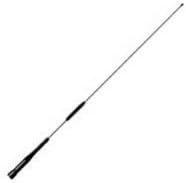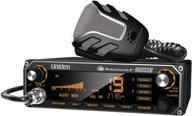Top products in 📡 Heavy Duty Fleet Navigation & Communication Supplies
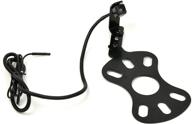

9 Review

New Tech to Boost Your Fleet's Efficiency
With rising fuel and labor costs, improving efficiency is key for transportation and logistics companies to stay competitive and profitable. Advances in technology offer new solutions to streamline operations, optimize routes, reduce costs, and boost productivity.
Another interesting products
GPS Tracking and Fleet Management Software
Real-time GPS tracking allows dispatchers to see exact vehicle locations and plan the most efficient routes. Fleet management software like Samsara and KeepTruckin provides additional insights into vehicle speeds, idle time, starts and stops, and other metrics to identify problems and coaching opportunities.
Electronic Logging Devices (ELDs)
ELDs like Blue Ink TECH ELD replace paper logbooks to track:
- Hours of service (HOS) compliance
- Driver duty status
- Miles driven
The automated logs help optimize routes and scheduling to avoid HOS violations.
Two-Way Radios
Two-way radios from brands like Motorola provide direct, real-time communication between drivers and dispatch for quick resolution of issues like:
- Traffic delays
- Route changes
- Load pickups/deliveries
Dash Cams
Dash cams like Samsara AI Dash Cams record driving footage to:
- Monitor driver safety
- Resolve accident liability
- Provide evidence for insurance/legal claims
The footage protects companies from fraudulent claims, reducing insurance costs.
Fleet Maintenance Software
Maintenance software like Dossier integrates with telematics data to enable features like:
- Predictive maintenance
- Preventive maintenance scheduling
- Parts inventory management
- Service history tracking
Proper maintenance means fewer breakdowns/repairs and optimal fuel economy.
The Bottom Line
Deploying a modern fleet management tech stack allows companies to boost compliance, safety, productivity, and cost-efficiency. Investing in systems like GPS tracking, ELDs, dash cams, and maintenance software saves money in the long-run by streamlining operations.
Streamlining Operations with Fleet Management Software
For companies that rely on vehicles to conduct business, fleet management software is an invaluable tool to optimize routes, reduce costs, and improve efficiency. Modern solutions provide a breadth of capabilities to help transportation organizations simplify operations.
Similar products
Real-Time Tracking
GPS fleet tracking gives dispatchers eyes on all vehicles to:
- Monitor locations
- Adjust routes based on traffic
- ETA accuracy
This enables efficient routing and scheduling to complete more jobs per shift.
Driver Behavior Monitoring
Sensors and telematics provide data on:
- Speeding
- Hard braking
- Acceleration
- Idling
Managers can coach drivers on safer, fuel-efficient habits to reduce costs.
Fuel Card Integration
Linking fuel card data to fleet software allows companies to:
- Track fuel usage
- Monitor MPG
- Identify wasteful spending
This enhances accuracy for fuel tax reporting and helps control fuel costs.
Maintenance Management
| Feature | Benefit |
|---|---|
| Digital DVIR | Easily record and track vehicle defects |
| Maintenance Scheduling | Preventive maintenance improves uptime |
| Parts Inventory | Reduce downtime waiting for parts |
Compliance
ELD integration enables:
- HOS tracking
- Accurate driver logs
- Reduced violations
Ensure DOT compliance to avoid fines and CSA score impacts.
Analytics
Robust reporting provides actionable insights into:
- Asset utilization
- Driver scorecards
- Fuel economy
- Maintenance metrics
Identify areas for improvement to boost efficiency.
Conclusion
Fleet management technology provides end-to-end visibility into operations. The unified data and capabilities unlock significant time and cost savings while improving fleet performance.
Improving Fleet Management with Electronic Logging Devices
For commercial trucking and transportation companies, electronic logging devices (ELDs) are a smart investment to boost compliance, safety, and operational efficiency.
Automated HOS Logging
ELDs automatically record hours of service (HOS) data to take theguesswork out of logging:
- Driving time
- On-duty not driving status
- Off-duty and sleep periods
This helps prevent HOS violations that risk driver safety as well as costly fines.
Simplify Compliance
ELDs make it easy to comply with Federal Motor Carrier Safety Administration (FMCSA) regulations that require:
- EOBR or AOBRD devices
- HOS limits - 11 hour driving max per 24 hours
- E-logs with timestamps and location data
- Tamper-resistant logs
Enhance Accuracy
ELDs eliminate mistakes that occur with manual paper logs:
- Calculation errors
- Inaccurate HOS tracking
- Log falsifications
The logs provide authoritative records in case of audits or disputes.
Fleet Optimization
ELD data aids real-time fleet management decisions related to:
- Asset allocation
- Route planning
- Job scheduling
Managers can maximize productivity and customer service.
Conclusion
ELDs provide compliance, accuracy, and productivity benefits over paper logs. The technology is a wise investment for modern commercial fleets looking to improve safety and operational efficiency.
Optimizing Fleet Maintenance with Software
Unplanned downtime is the bane of any transportation fleet. Breakdowns disrupt operations, reduce revenue, and damage customer satisfaction. Fleet maintenance software is essential for commercial operators to maximize uptime.
Maintenance Scheduling
Software automates scheduling for:
- Preventive maintenance based on date, mileage, and engine hours
- Regular inspections and lubrication
- Compliance with manufacturer recommendations
Preventive maintenance reduces road calls and catastrophic failures.
Parts Inventory Management
Solutions integrate with parts suppliers to enable capabilities like:
- Lookup for parts quantities, availability, and pricing
- Digital catalogues and schematics
- Reorder reminders and automated purchasing
Efficient parts supply means technicians can complete repairs faster.
Maintenance History
Detailed vehicle histories allow companies to:
- Quickly pull past work orders, parts used, and costs
- Identify repeat repairs indicating larger issues
- Comply with DOT inspection requirements
Technicians have full context to resolve problems faster.
Telematics Integration
Connecting maintenance software with telematics data enables:
- Engine fault code monitoring
- Real-time temperature and pressure alerts
- Benchmarking and anomaly detection
Early diagnosis of developing problems minimizes downtime.
Mobile Access
Technicians can utilize mobile apps for:
- Remote troubleshooting
- Lookup of repair instructions
- Documentation of repairs in the field
Issues can be addressed promptly before returning to the shop.
Analytics
Robust reporting provides insights into:
- Cost per mile
- Parts spending
- Technician productivity
- Asset-level repair trends
Identify opportunities to fine-tune maintenance practices and control expenses.
Conclusion
Modern fleet maintenance software pays for itself through more uptime, lower repair costs, and optimized technician output. Commercial operators should adopt a solution tailored to their assets and operational requirements.
Unlocking Fleet Insights with Vehicle Telematics
Telematics systems are invaluable for commercial fleets to collect data, monitor vehicle health, improve safety, and boost efficiency. Advanced solutions deliver a wide array of benefits via wireless transmission of information.
GPS Tracking
Real-time GPS location data enables:
- Driver route oversight
- Geofencing and alerts
- Optimization of dispatch and routing
Managers can ensure on-time customer deliveries and quickly address issues.
Driver Behavior
Sensors monitor parameters like:
- Acceleration
- Braking
- Speed
- Idling
This allows for driver coaching to improve safety and fuel efficiency.
Vehicle Diagnostics
Telematics provide engine and system fault code alerts to enable:
- Preventive maintenance
- Early diagnosis of problems
- Reduced repair costs
Monitor vehicle health to maximize uptime.
Fuel Consumption
Access data on parameters like:
- Fuel level
- MPG
- Idle fuel burn
Optimize driving habits and fleet MPG performance.
Collision Detection
G-force sensors enable:
- Crash alerts
- Understanding accident cause
- Driver coaching
Improve safety and prevent future collisions.
Cold Chain Monitoring
Temperature sensors help:
- Maintain compliance for hauling refrigerated goods
- Identify equipment failures
- Prevent cargo spoilage
Ensure load integrity and prevent revenue losses.
Conclusion
Vehicle telematics deliver data insights that allow fleets to meet safety goals, control costs, optimize efficiency, and improve customer service. The systems provide an impressive ROI for those looking to manage assets smarter.
Choosing the Right Navigation for Your Trucks and Buses
Routing commercial vehicles efficiently requires accurate, specialized navigation suited for the job. Fleet managers have various technology options to consider for their trucks and buses.
In-Dash GPS Units
Dedicated truck GPS units from Garmin and Rand McNally offer:
- Large, easy-to-read screens
- Rugged, locking mounts
- Tools for weight, height, width restrictions
- Points of interest like truck stops and rest areas
Many update via WiFi automatically for latest maps and real-time traffic.
Built-In Navigation Systems
Newer trucks and buses come equipped with factory navigation like:
- Mercedes-Benz Truck Navigation
- Volvo and Mack Dynafleet Navigation
- Omnitracs navigation
Systems integrate with other vehicle data networks and offer intuitive touchscreens.
Trucking Apps
Many fleets opt for dedicated apps like:
- Trucker Path
- TruckMap
- BigRoad
Apps live on driver BYOD smartphones and offer real-time routing, load tracking, and more.
Two-Way Radios
Two-way radios provide direct communication with dispatchers to get directions and plan routes efficiently. Digital radios enable extra capabilities like:
- GPS location monitoring
- Text messaging
- Job ticket management
Conclusion
Fleets should choose navigation that fits their budget and tech preferences while delivering robust routing tools. Training helps drivers fully utilize capabilities for safe, efficient navigation.
Optimizing Truck Navigation with Dash-Mounted GPS Units
For professional drivers, a dedicated dash-mounted GPS unit is an indispensable tool for safe, efficient navigation. Designed specifically for the demands of commercial transport, these devices offer significant benefits over standard automotive GPS.
Large Display
Units like Garmin DEZL feature a 7-inch or larger display optimized for simple operation:
- High-contrast and glare-resistant screen
- Glove-friendly touchscreen
- Easy-to-read map views
Minimizes driver distraction and eye strain for safety.
Truck-Specific Maps
Advanced navigation incorporates truck routing data like:
- Bridge heights
- Weight and width restrictions
- Low clearances
- Steep grades
Avoids dangerous routing that could damage cargo or the vehicle.
Tools and Settings
Units allow input of vehicle profile details including:
- Wheelbase
- Load type
- Hazmat restrictions
- Number of axles
Enables routing tailored for specific configurations.
Driver Amenities
Points of interest like:
- Truck stops
- Rest areas
- Truck service centers
Help drivers plan trips and stops efficiently.
Conclusion
Designed for professional trucking, dash-mounted GPS systems optimize navigation, safety, and productivity. Units tailored specifically to commercial transport provide an excellent ROI.
"What Are The Most Popular Products In The Heavy Duty Fleet Navigation & Communication Supplies Category?"
Based on the search results, here are some of the most popular products in the Heavy Duty Fleet Navigation & Communication Supplies category:
Fleet Management Software and Fleet Maintenance Software are two of the most popular products in this category, according to, , and. These software products provide real-time GPS tracking, vehicle performance data, route planning features, and more. Antennas & Parts and Camera Systems are also popular products in this category, as mentioned in. These products help improve communication and navigation in heavy-duty vehicles.
What Are The Features Of The Top-Rated Products In The Heavy Duty Fleet Navigation & Communication Supplies Category??
Based on the search results, here are some of the features of the top-rated products in the Heavy Duty Fleet Navigation & Communication Supplies category:
These features are designed to enhance the efficiency of heavy-duty fleets by providing real-time data, optimizing routes, and improving communication and navigation.





